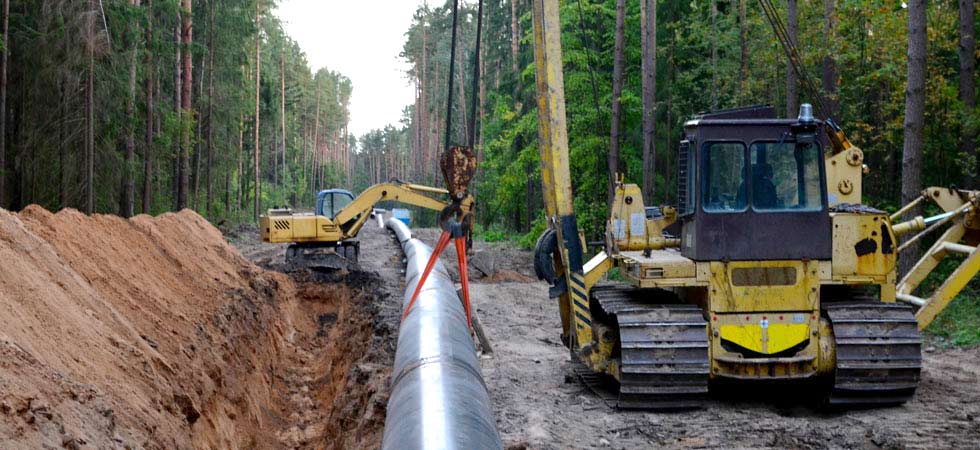
In February 2010, a massive gas explosion destroyed a power plant that was under construction in Middletown, Connecticut. Six people were killed in the explosion, and 27 others were injured. The event was instrumental in prompting significant changes to the National Fire Protection Association (NFPA) codes relating to the cleaning and purging of gas lines.
On Dec. 30, 2022, the Connecticut Supreme Court issued a decision that appears to put an end to the ensuing decade of litigation that arose from the incident. The case in question is Gonzalez v. O&G Industries Inc.
Foreign Material
The power plant was owned by Kleen Energy Systems LLC. Construction commenced in 2007. The general contractor on the job was O&G Industries Inc., and a separate firm — Power Plant Management Services — entered into a contract with Kleen Energy to manage and administer the plant. O&G hired Keystone Construction to install, test and purge the gas piping in the plant.
In January 2010, construction work was nearly complete. The plant was designed to generate electricity by means of large natural gas-fueled turbines. Prior to starting up the turbines, it was necessary to clear the interior of the natural gas supply lines of construction debris. Foreign material, such as welding slag, rust and dirt, is often introduced into the piping during the earlier phases of construction. Unless cleared out of the pipes, such debris could damage the gas turbines.
Gas Blow
To clear the debris, Keystone employed an industry standard procedure known as a “gas blow.” This procedure had been common practice in the construction of power plants for more than 80 years and has been employed in the construction of most natural gas power plants in the past 25 years. In a “gas blow,” natural gas is introduced into a gas line at a pressure that is significantly higher than normal operating pressure. The end of the gas line is left open, and the idea is to blow the debris out of the end of the line. The end of the pipe is fitted with a special fitting known as a “nozzle.”
It is essential during a gas blow operation for the nozzle to always be pointed up and into the open atmosphere, because very large volumes of flammable gas are discharged. There were more than 2,000 feet of natural gas fuel supply pipeline at the Kleen Energy plant. This pipe needed to be cleared over two days, and the work proceeded in segments. Significantly, on Jan. 28, 2010, Connecticut state regulators had warned that, in their opinion, natural gas should not be used to clear the pipes. They suggested the use of nitrogen or compressed air.
Nevertheless, on Jan. 30, Keystone conducted the first series of gas blow procedures using high-pressure natural gas. These cleared approximately three-quarters of the piping without incident. The work was suspended for a week, and then the state regulators repeated their recommendation not to use natural gas. However, the gas blows were resumed on Feb. 7 and at first were completed without incident. Significantly, the discharge nozzles had been oriented vertically on the Jan. 30 and Feb. 7 gas blows so that the natural gas vented upward into the atmosphere without obstruction. This was to change.
Fatal Consequences
Later in the day on Feb. 7, two more gas blow procedures were conducted. Most significantly, and unlike the prior gas blow procedures, the discharge nozzle was now oriented horizontally. This change had fatal consequences. On the first of the two procedures, the natural gas discharged from the nozzle did not vent up into the atmosphere without obstruction.
Instead, gas was sent horizontally across a courtyard into an area partially enclosed between two large structures and surrounded by other power generation equipment, including propane heaters. In addition, four small metal pipes were located in the path of the exhaust from the discharge nozzle. The first gas blow lasted for two minutes, which was longer than normal.
The natural gas used for this gas blow traveled out of the discharge nozzle and into the partially enclosed area, where it was trapped, unable to dissipate quickly. About five minutes later, when the second gas blow began, natural gas from the first procedure remained trapped and mixed with air in the partially enclosed area.
Compounding the Error
The second gas blow lasted for approximately 45 seconds, and the danger presented by the horizontal discharge nozzle was now compounded by a second factor — unusually high pressure. The pressure of the gas was now increased to a level that was five times the pressure recommended by the gas turbine manufacturer.
At this high pressure, the solid debris being cleared from the pipe was shot from the discharge nozzle at a high velocity. This debris struck the small metal pipes located in the courtyard, acquiring heat from the glancing blow.
This red-hot debris was then propelled into the partially enclosed area, where natural gas had been trapped from the prior gas blow. The debris was hot enough to ignite the accumulated gas. The resulting explosion killed six workers and injured 27 others.
As might be expected, a torrent of litigation ensued. The injured and deceased workers were deemed to be employees of the general contractor, O&G Industries, so that company was immune from suit because the workers and their families had received worker’s compensation awards. Many of the workers and their families participated in a huge arbitration proceeding against Keystone, which resulted in awards totaling approximately $35 million, but these awards then became entangled in insurance coverage disputes.
Closing the Door
Many plaintiffs then pursued Kleen Energy and its management company (Power Plant Management Services). However, these claims were shot down by the Connecticut Supreme Court in its Dec. 30 opinion. The court held that Kleen Energy and Power Plant Management were not strictly liable for losses from the explosion and that they could not be held responsible for the negligence of their contractor, Keystone.
That seems to have closed the final door on the litigation. The broader significance of the Kleen Energy tragedy lies in the complete overhaul of gas line cleaning and purging procedures that resulted after the event. The NFPA issued a new standard, NFPA 56, for the internal cleaning of piping. In addition, the provisions of NFPA 54 regarding the purging of air from gas piping were significantly revised.


